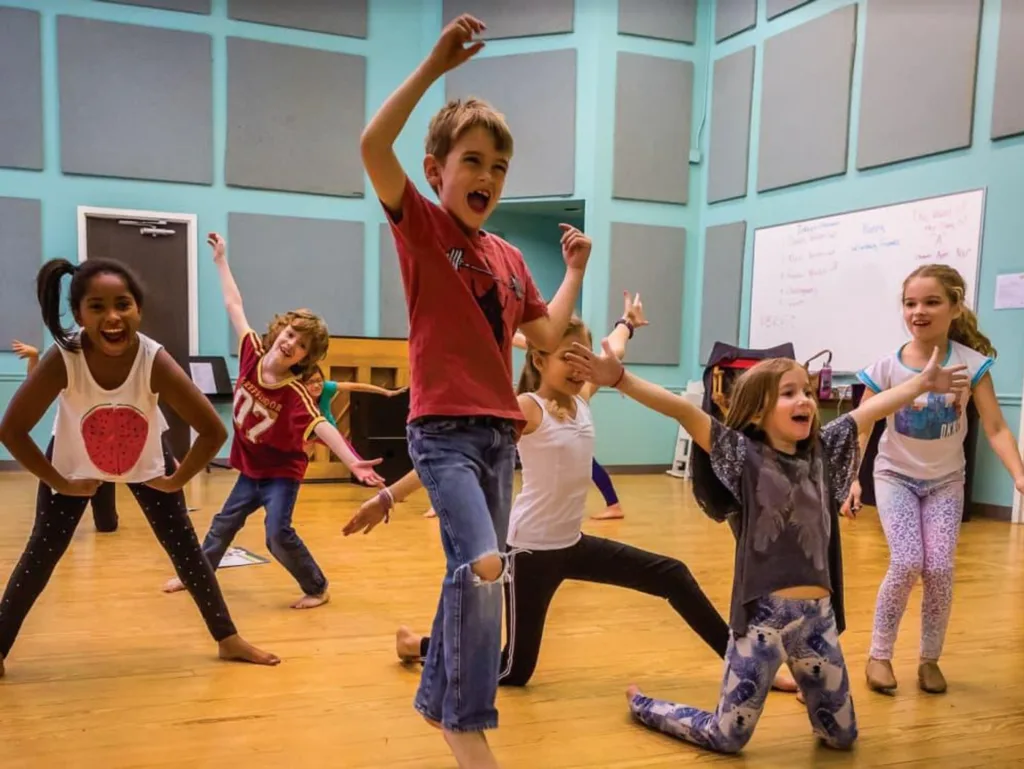
IMAGE THEATRE
In Image Theatre, still images are used to explore abstract concepts such as relationships and emotions, as well as realistic situations. This technique was developed by Augusto Boal and is described fully in his book The Rainbow of Desire.
Participants rapidly sculpt their own or each others’ bodies to express attitudes and emotions. These images are then placed together and ‘dynamised’ or brought to life. The method is often used to explore internal or external oppression, unconscious thoughts and feelings
STORYTELLING
Storytelling is one of the simplest and perhaps most compelling forms of dramatic and imaginative activity. A good place to start is by telling stories to your pupils and encouraging them to share stories with one another. All of us can become engaging storytellers with a little practice. There may also be members of staff who are particularly skilled at telling stories, or you could invite a professional storyteller (such as Hugh Lupton in the video below) into the school. Listen to each other, watch videos of storytelling and encourage the children to identify techniques they could use in their own stories
TEACHER IN ROLE
Teacher in role (TiR) is an invaluable technique for shaping the dramatic process and developing students’ learning. Simply put, the teacher or facilitator assumes a role in relation to the pupils. This may be as a leader, an equal, or a low-status role – whatever is useful in the development of the lesson. The teacher may ask questions of the students, perhaps putting them into role as members of a specific group and encouraging them to hot-seat her in return.
CONSCIENCE ALLEY
A useful technique for exploring any kind of dilemma faced by a character, providing an opportunity to analyse a decisive moment in greater detail. The class forms two lines facing each other. One person (the teacher or a participant) walks between the lines as each member of the group speaks their advice. It can be organised so that those on one side give opposing advice to those on the other. When the character reaches the end of the alley, she makes her decision. Sometimes known as Decision Alley or Thought Tunnel.
This drama technique can easily be applied to a range of subjects across the curriculum, whenever a character is faced with a decision. It may be that you reach a certain point in your drama lesson, or while reading a story aloud, or describing an historical event, when such a moment occurs. Turn the situation round on the children/students so that they have to consider the issues involved. Then in role as Abraham Lincoln, or Oliver Twist, or Red Riding Hood, you walk down the Conscience Alley as members of the group whisper their advice to you
HUMAN BAROMETER
Students will have an opportunity to reflect on and share personal values and/or beliefs about social issues and topics of national as well as international concern. They will also have an opportunity to share why these issues are important to them (and society) by sharing their rationale for choosing a particular stance.
CHORAL SPEAKING
Choral dramatization involves students reading aloud by assigning parts to each group member. Choral dramatization can use texts such as rhymes, poetry, and picture books. Students can experiment with voice, sound gesture and movement (Swartz, 1995).
HOT SEATING
Hot Seating is a strategy in which a character or characters, played by the teacher or a student, are interviewed by the rest of the group. This activity invites students to recount a specific event, explore motivation and multiple perspectives/experiences related to a theme, topic, event, or idea.
